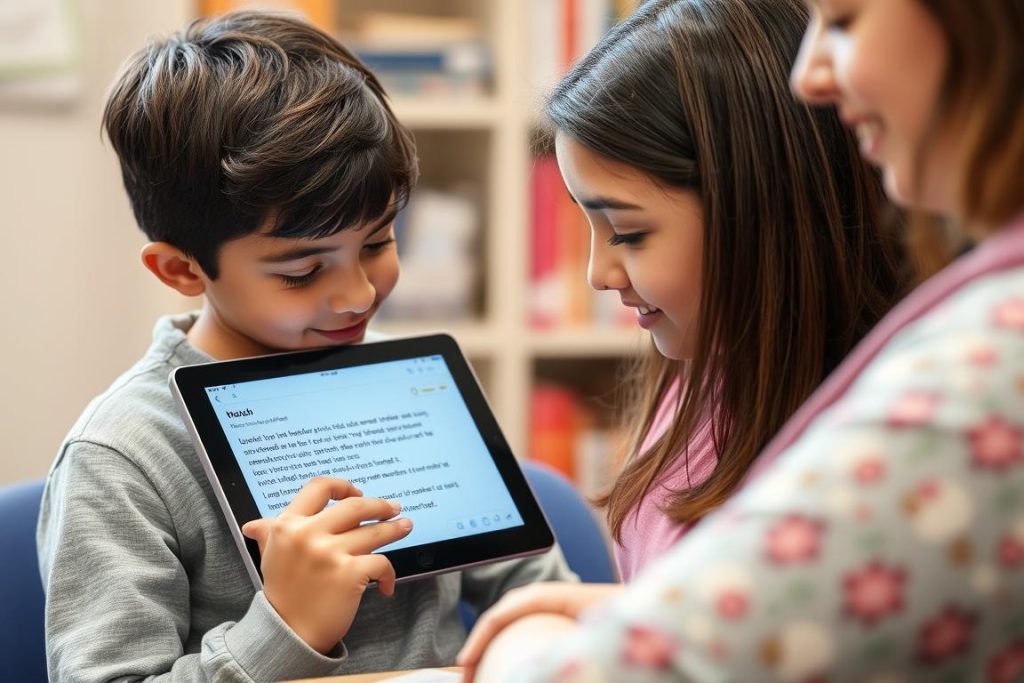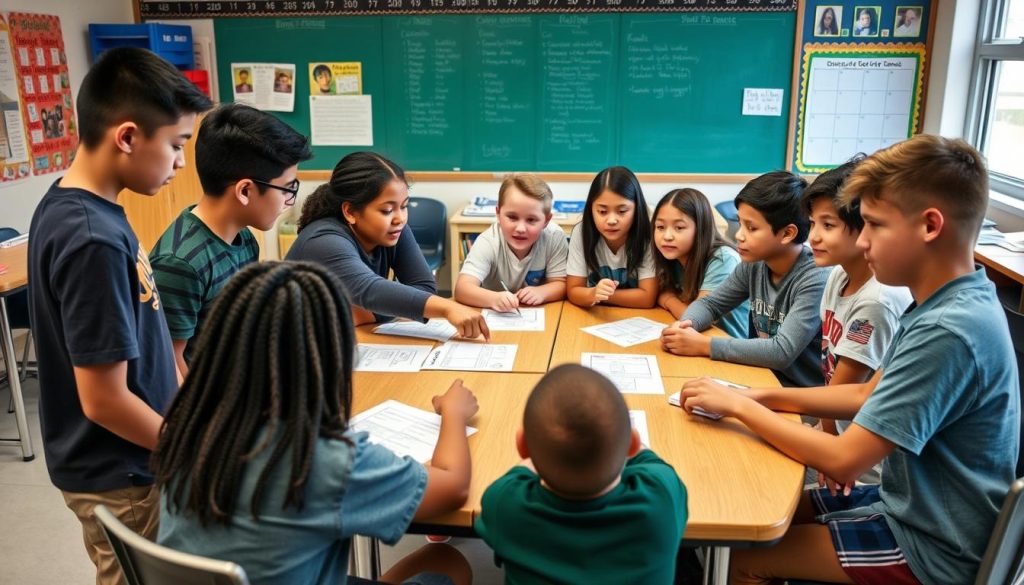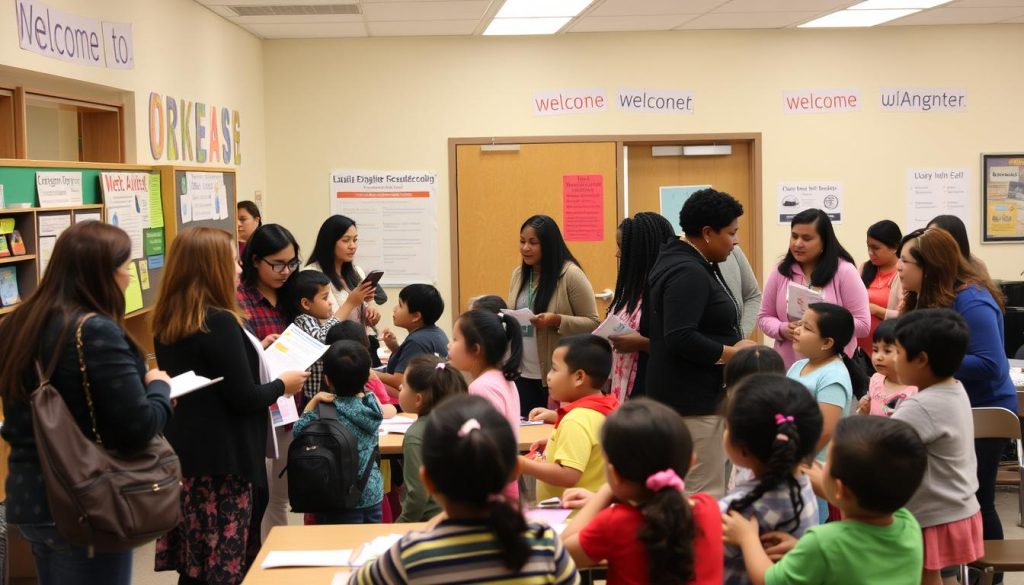Visual Learning Tools for English Language Learners
Visual supports are crucial for English Language Learners who are developing their vocabulary and comprehension skills. Research shows that visual learning tools can reduce the cognitive load for ELLs, allowing them to focus on content understanding rather than language processing alone.
Effective visual tools include graphic organizers, anchor charts, picture dictionaries, and visual schedules. These resources provide context and meaning for new vocabulary and concepts, helping students make connections between their native language knowledge and new English terms.
One particularly effective approach is the use of visual word walls that pair new vocabulary with images. This multi-sensory approach helps English Language Learners retain new terms and understand their contextual usage. Teachers can create digital or physical word walls that grow throughout the year as students encounter new vocabulary.
Enhance Your Visual Teaching Strategies
Looking for ways to implement effective visual learning tools in your classroom? Our differentiation course offers specialized strategies for supporting English Language Learners through visual learning approaches.
Digital Translation Tools That Support English Language Learners
In today’s diverse classrooms, digital translation tools have become invaluable resources for teachers working with English Language Learners. These technologies bridge communication gaps and provide immediate support when language barriers arise.
Modern translation tools go beyond simple word-for-word translation. They now offer contextual translations, pronunciation guides, and even cultural notes that help students understand nuances in language. For newcomer English Language Learners especially, these tools can reduce anxiety and build confidence during the critical early stages of language acquisition.

Some recommended digital translation resources include:
Google Translate
Offers translation between 100+ languages, with camera translation features that allow students to instantly translate printed text.
Microsoft Translator
Provides real-time translation for classroom discussions, allowing English Language Learners to follow along with conversations in their native language.
When implementing translation tools, it’s important to use them as scaffolds rather than crutches. The goal should be to gradually reduce dependency on translation as students build their English proficiency. Teachers can establish clear guidelines for when and how these tools should be used in the classroom.
Interactive Apps Designed for English Language Learners
Educational apps specifically designed for language acquisition provide engaging, interactive experiences that support English Language Learners at various proficiency levels. These digital tools offer personalized learning paths, immediate feedback, and gamified elements that motivate students to practice language skills consistently.

Effective language acquisition apps for English Language Learners should include:
- Multi-sensory learning experiences (visual, auditory, and kinesthetic)
- Scaffolded content that gradually increases in complexity
- Opportunities for both receptive and productive language practice
- Cultural context that helps students understand language in real-world situations
- Progress tracking features that help teachers monitor student growth
Many of these apps can be used during center time, as homework extensions, or during dedicated technology periods. The key is to align app usage with your curriculum goals and to provide guidance on how students should engage with these digital tools.
Discover More Educational Resources
At Credits for Teachers, we offer professional development opportunities that help you integrate technology effectively for your English Language Learners.
Culturally Responsive Materials for English Language Learners
Culturally responsive teaching materials recognize and celebrate the diverse backgrounds of English Language Learners, creating meaningful connections between students’ home cultures and new language learning. When students see themselves represented in classroom materials, they develop stronger engagement and motivation to learn.
Effective culturally responsive materials for English Language Learners include:
Diverse Literature
Books featuring characters from various cultural backgrounds and bilingual texts that validate students’ home languages.
Cultural Artifact Sets
Authentic items from different cultures that can be used as discussion prompts and writing inspiration.
Multilingual Resources
Learning materials available in multiple languages that support content learning while students develop English proficiency.
When selecting culturally responsive materials, it’s important to avoid stereotypes and to seek authentic representations of diverse cultures. Involve families and community members in sharing cultural resources and perspectives whenever possible.
By incorporating culturally responsive materials, teachers create learning environments where English Language Learners feel valued and represented, which research shows leads to improved academic outcomes and stronger language development.
Scaffolding Tools That Empower English Language Learners
Scaffolding is essential for English Language Learners to access grade-level content while developing language proficiency. Effective scaffolding tools provide temporary support that can be gradually removed as students gain independence.
Key scaffolding tools for English Language Learners include:
Sentence Frames
Partially completed sentences that provide structure for academic language while allowing students to insert their own content knowledge.
Example: “The character feels _____ because _____.”
Word Banks
Curated lists of vocabulary relevant to the current topic that students can reference during speaking and writing activities.
Example: Character traits word bank: determined, courageous, compassionate, etc.
Think-Alouds
Teacher modeling of thought processes that makes academic thinking visible and provides language models for English Language Learners.
Guided Notes
Partially completed notes that allow students to focus on content comprehension rather than copying extensive text.
The key to effective scaffolding is to match the level of support to students’ current proficiency levels and to gradually release responsibility as students develop skills. This differentiated approach ensures that all English Language Learners can access challenging content while building language skills.
Master Differentiation Strategies
Learn how to implement effective scaffolding techniques for your English Language Learners through our comprehensive differentiation course.
Assessment Tools Tailored for English Language Learners
Appropriate assessment is crucial for understanding the progress of English Language Learners and planning effective instruction. Traditional assessments may not accurately measure content knowledge when language barriers exist, so specialized assessment tools are essential.
Effective assessment approaches for English Language Learners include:
- Performance-Based Assessments: Allow students to demonstrate understanding through projects, demonstrations, or presentations with appropriate language scaffolds.
- Portfolio Assessment: Collection of student work over time that shows progress in both content knowledge and language development.
- Modified Written Assessments: Simplified language, visual supports, and extended time accommodations that maintain content rigor while reducing linguistic barriers.
- Observation Protocols: Structured observation tools that help teachers document language use and content understanding during classroom activities.
When designing assessments for English Language Learners, it’s important to distinguish between language proficiency and content knowledge. Students may understand concepts deeply but struggle to express that understanding in English. Effective assessments provide multiple pathways for students to demonstrate what they know.
Regular formative assessment is particularly valuable for English Language Learners, as it allows teachers to make timely instructional adjustments based on students’ evolving needs. Digital tools that provide immediate feedback can be especially helpful in this process.
Collaborative Learning Structures for English Language Learners
Collaborative learning structures provide English Language Learners with authentic opportunities to practice language in meaningful contexts. When carefully designed, these structures create a supportive environment where ELLs can take risks with language while engaging with academic content.

Effective collaborative structures for English Language Learners include:
Think-Pair-Share
Gives students time to process information individually before discussing with a partner and then sharing with the larger group.
Jigsaw
Students become “experts” on one aspect of a topic and then teach that information to peers, creating interdependence.
Numbered Heads Together
Structured group work where each student has a number and must be prepared to represent their group’s thinking.
When implementing collaborative structures, it’s important to:
- Assign specific roles that play to students’ strengths while stretching their skills
- Provide language supports such as sentence frames and vocabulary resources
- Establish clear expectations for respectful interaction and language use
- Create mixed-proficiency groupings that allow for peer modeling and support
Collaborative learning not only enhances language development but also builds cultural understanding and classroom community. When English Language Learners feel safe to participate, they engage more deeply with both language and content.
“The collaborative structures in my classroom transformed how my English Language Learners participate. Students who were once silent are now actively contributing because they have the support they need to take risks with language.”
Family Engagement Resources for English Language Learners
Engaging the families of English Language Learners is essential for student success. When schools build strong partnerships with families, students benefit from consistent support across home and school environments.

Effective family engagement resources include:
Multilingual Communication Tools
Translation services, multilingual newsletters, and communication apps that bridge language barriers between school and home.
Family Literacy Programs
Initiatives that build both parents’ and students’ language skills while celebrating home languages and cultures.
Cultural Liaisons
Staff or volunteer positions that help families navigate school systems and advocate for their children’s needs.
At-Home Learning Resources
Bilingual materials that help families support learning at home in both English and the home language.
When developing family engagement strategies, it’s important to recognize and value the cultural wealth that families bring. Rather than assuming a deficit perspective, effective programs build on families’ existing knowledge and strengths.
Research from the U.S. Department of Education shows that family engagement is one of the strongest predictors of academic success for English Language Learners. Investing in these relationships yields significant benefits for students’ language development and overall achievement.
Professional Development for Teachers of English Language Learners
Ongoing professional development is essential for teachers working with English Language Learners. As student populations and best practices evolve, educators need opportunities to refine their skills and expand their instructional toolkits.
Effective professional development for teachers of English Language Learners should include:
- Understanding of second language acquisition principles and stages
- Strategies for integrating content and language instruction
- Methods for differentiating instruction based on language proficiency levels
- Approaches to culturally responsive teaching that values students’ backgrounds
- Assessment practices that accurately measure both content knowledge and language growth
Professional learning communities (PLCs) focused specifically on supporting English Language Learners can be particularly valuable. These collaborative groups allow teachers to share strategies, analyze student work, and problem-solve challenges together.
Online courses and webinars provide flexible options for busy educators to deepen their knowledge about effective ELL instruction. These resources often include classroom videos, downloadable materials, and opportunities to connect with experts in the field.
Enhance Your Skills for Teaching ELLs
Credits for Teachers offers specialized professional development courses designed to help you support English Language Learners effectively. Our courses provide practical strategies you can implement immediately in your classroom.
By investing in professional development, teachers not only improve outcomes for their English Language Learners but also enhance their overall instructional effectiveness for all students.
Creating Success for Your English Language Learners
Supporting English Language Learners effectively requires a thoughtful approach that combines specialized tools, cultural responsiveness, and ongoing professional growth. The eight tools we’ve explored provide a foundation for creating inclusive, engaging learning environments where ELLs can thrive academically while developing English proficiency.
Remember that each English Language Learner brings unique strengths, experiences, and needs to your classroom. The most effective teachers combine these tools with careful observation and relationship-building to create personalized learning experiences.
As you implement these resources in your classroom, focus on creating a supportive environment where students feel safe to take risks with language. Celebrate progress, value home languages and cultures, and maintain high expectations for all learners.
Key Takeaway: The most effective support for English Language Learners combines specialized tools with a responsive, inclusive approach that values students’ cultural and linguistic backgrounds while maintaining high academic expectations.
By incorporating these tools and strategies, you’ll be well-equipped to support the English Language Learners in your classroom on their journey toward language proficiency and academic success.
Continue Your Professional Growth
Ready to deepen your expertise in supporting English Language Learners? Explore our specialized courses designed for K-12 educators.




